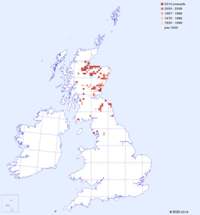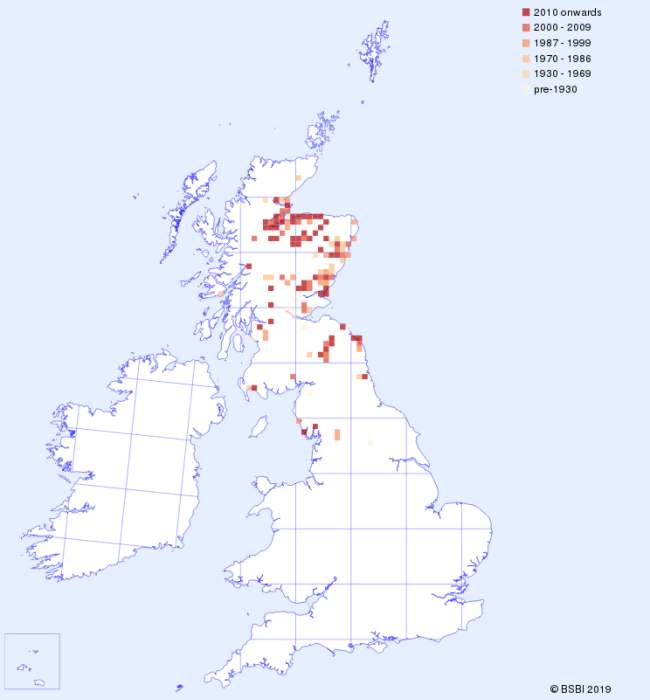Classified as Vulnerable in Britain, where it is confined to northern England and Scotland, Coralroot Orchid is tiny and inconspicuous and therefore difficult to spot. The plant lacks leaves (it has a few scale-like sheaths on the stem) and is entirely dependent on a relationship with fungi during its life. Corallorhiza trifida grows in moist but not overly wet habitats and is tolerant of various light conditions from dark woodland to lightly shaded or open sunny positions. It is most commonly associated with willow and alder carr (occasionally birch and pine trees) with which the fungi it depends upon forms mycorrhizal relationships. In North America several species of Corallorhiza orchids are found in pine woodland. Corallorhiza trifida flowers from May to August. On mainland Europe this orchid occurs widely in the north, and its range extends southwards to France and Corsica. Both the English common name and the scientific name refer to the appearance of the rhizome, which is said to resemble coral.
| Distribution Map | Key Features | |
 |
Records for the Coralroot Orchid from BSBI are shown on the map with most recent in front. (Hover the mouse over the small map to expand it.) |
Plant: 5 to 30cm in height but usually 10 to 15cm; stem yellowish-green in woodland conditions but sometimes burnished purple is more open positions including sand dunes. |
Image Gallery for Coralroot Orchid Corallorhiza trifida
| Pollination | Taxonomy & Hybrids |
Possibly pollinated by small insects, but self pollination is more common. |
The specific name trifida means 'split into three' and is said to refer to the lip of the flower, although it is barely tri-lobed. |
Articles about Coralroot Orchid in JHOS
